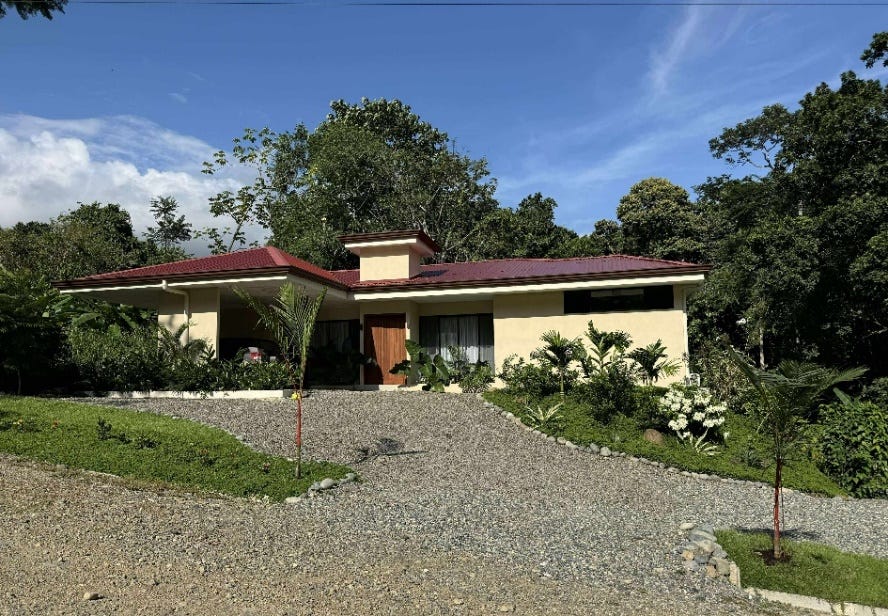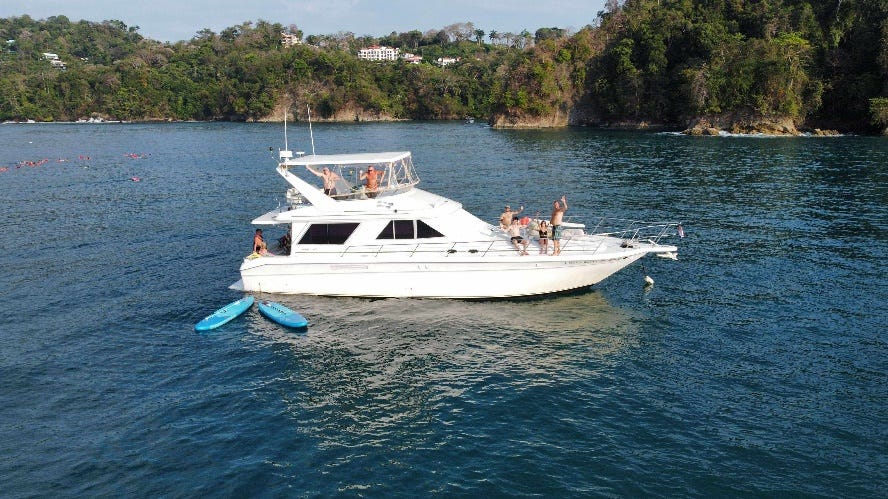Swap Cold Winters for Warm Beaches in Costa Rica
Poolside mornings, $8 dinners, and community like nowhere else.
As a kid in suburban Detroit, Aaron T. Kabobel often spotted International Living on his grandparents’ table. Decades later, one of its articles listing Costa Rica as a top retirement destination planted a seed that grew into something bigger—a dream he’s now living.
At 57, Aaron wakes to the sounds of birds and monkeys instead of traffic. His mornings begin with meditation, coffee, and the warmth of a tropical climate he once longed for. Winter had worn out its welcome, and even Europe felt too gray and rainy for Aaron. Costa Rica, by contrast, called him into the light.
A retired high school teacher, Aaron first came to Tamarindo in 2022, when tourism was still quiet after COVID. A year later, he returned to explore more of the Pacific Coast. “Once I hit Dominical, I fell in love with the area. Jurassic Park meets Avatar—a wet jungle, full of waterfalls and wildlife… exactly what I was looking for.”
That love of the landscape led him to Uvita, where he met a real estate agent and began exploring his options. His advice to anyone considering the move: “Take as much time as you can to bop around and see what calls to you.”
He eventually settled just south, in Ojochal, buying land and building a home with a pool and two rental units. The project wasn’t without frustrations—tweaking blueprints, overseeing construction, and managing landscaping—but the results, he says, were worth it. Now, as the rental market shifts, he plans to focus on long-term tenants during slower seasons.

Life in this corner of Costa Rica has its balance. Uvita, just up the road, is a practical hub with doctors and shopping, while Ojochal is more laid-back and residential. Up in the hills, where Aaron built his home, the air is cooler, softened by ocean breezes. “Right now I am comfortable by my pool,” he says, “and I know it’s hotter down at the beach.”
And then, of course, there are the waterfalls. In Ojochal and Uvita, they’re part of daily life. There’s Catarata el Pavón, where a dip in the river feels like jungle bathing at its best. The private Waterfall of Ojochal, which Aaron jokingly calls the “prom waterfalls,” makes a stunning backdrop for special photos. The Hidden Waterfall in Uvita, reached through a bamboo forest, is “like something out of Architectural Digest that Mother Nature creates.” And at Catarata Uvita, relaxation and adrenaline collide—bright butterflies, tropical flowers, and a natural waterslide that drops more than 30 feet. Aaron’s tip: “Keep your arms and feet crossed so you enter like a torpedo.”
But for Aaron, Costa Rica is about more than scenery. He has a passion for bringing people together. His calendar is dotted with pool parties, drag shows, jungle pub crawls, and events like the Easter Bonnet Competition. “Our last Unity pool party had six countries represented!” he says.
That sense of community extends beyond his own gatherings. Tuesdays bring beach meetups, happy hours happen twice a week, and farmers’ markets fill both Wednesdays and Saturdays. Spontaneity is part of the rhythm here—“Just the other day, I spontaneously invited 14 people over for a pool gathering.”

Ojochal itself has earned a reputation as a hidden foodie destination, and Aaron has his favorites: Citrus, Villas en el Bosque—where pizza pairs with two-for-one drinks on Tuesdays—and The Vine Bistro and Bar, where he hosts his drag shows. Playa Ventanas is his go-to beach for soaking up local culture. “Find the go-to mama that makes you the best chicken and rice, and the guy to bring you chairs and an umbrella.” For solitude, he heads to Playa Arco, a remote stretch of sand only accessible at low tide.
Dining out is part of the lifestyle. Aaron eats out three or four times a week, usually spending $30 to $40. More casual sodas—small, family-run eateries—are even easier on the wallet, with meals around $8. Between fresh fruits, vegetables, chicken, and fish, he says, eating well here is both affordable and healthy.
For bigger purchases, residents often make the two-hour drive to Panama, where appliances, clothes, and liquor are much cheaper. Aaron recently picked up four new tires for $300 there and looks forward to returning with $8 Absolut and $10 Patrón. While officials track purchases, personal-use shopping rarely causes problems.
Of course, even paradise has its challenges. Tropical storms can bring days of gray skies, a stark contrast to the usual sunshine. Cars remain expensive due to high import taxes, though insurance is affordable. Electricity runs about $180 a month, including his pool, and air conditioning is only needed in the hottest months, like April and May. Property taxes and car insurance come in at about $700 each per year.
Aaron also travels to San José, about four hours away, for shopping, seeing friends, and events such as the Pride Parade—the largest celebration of its kind in Central America. These days, his wardrobe has simplified to shorts, t-shirts, and bathing suits.
Healthcare has also been on his radar. With US insurance through his pension and local doctors in Costa Rica, he’s been comparing prescription costs and feels reassured to have choices in both countries.
In the end, Aaron says he’s found his perfect place in Costa Rica—or at least for now. With waterfalls to discover, beaches to wander, and new friends always just around the corner, his adventure is only beginning.
— Bekah Bottone



